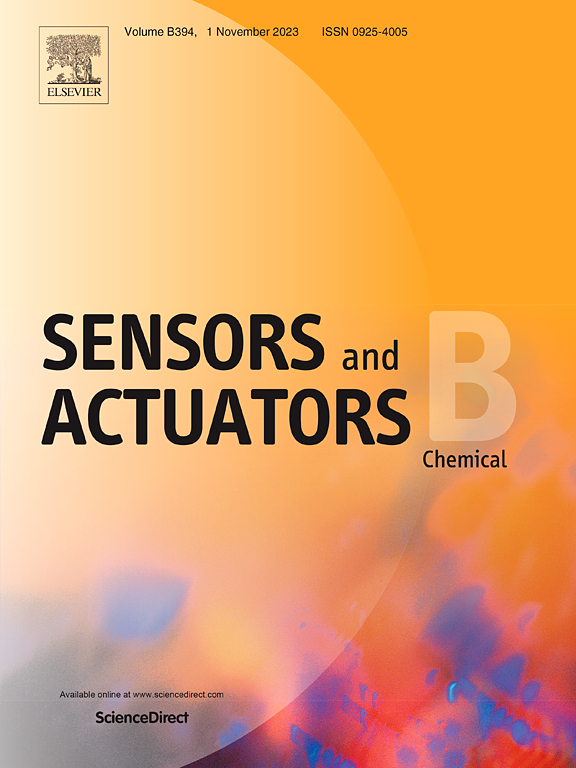Engineering binding tetracycline with CDs/QDs@MOFs nanoarchitecture for ternary fluorescence-based point-of-care testing
IF 3.7
1区 化学
Q1 CHEMISTRY, ANALYTICAL
引用次数: 0
Abstract
The substantial risk to human health posed by tetracycline (TC) residues necessitates the development of a facile and portable sensor for rapid and selective detection. In the present study, an ingeniously integrated "turn-on" and "turn-off" ternary emissive ratio sensing platform was manufactured for TC point-of-care testing by engineering the bond of TC with zeolitic imidazolate framework-8 (ZIF-8) in the carbon dots/quantum dots embedded ZIF-8 nanoarchitecture (CDs/QDs@ZIF-8). By integrated blue-fluorescent CDs and red-fluorescent QDs into ZIF-8, a multiple-emission fluorescence responsive probe was constructed. By integrating the combination of TC and ZIF-8, as well as the response of CDs to TC, this base realized the ternary emissive ratio sensing of TC with the variation of blue-green-red fluorescence signals with a detection range of 0.5–50.0 μM and a limit of detection (LOD) as low as 14.2 nM. Additionally, a portable test kit was developed for on-site TC monitoring based on nano-probe-immobilized hydrogel with the aid of a custom 3D-printed, smartphone-based portable device. This work integrated "turn-on" and "turn-off" multi-color sensing strategy, combined with the use of hydrogels and smartphone technology, is anticipated to spark new inspiration for developing a new generation of multi-emission TCs sensors for biomedical monitoring.

工程结合四环素与CDs/QDs@MOFs纳米结构的三元荧光护理点测试
四环素残留对人类健康构成的重大风险要求开发一种简便、便携的传感器,以便进行快速和选择性检测。在本研究中,通过在嵌入ZIF-8纳米结构(CDs/QDs@ZIF-8)的碳点/量子点中设计TC与沸石咪唑盐框架-8 (ZIF-8)的键,制造了一个巧妙集成的“打开”和“关闭”的三发射比传感平台,用于TC点检测。将蓝色荧光CDs和红色荧光量子点集成到ZIF-8中,构建了一个多发射荧光响应探针。该碱基将TC与ZIF-8结合,结合CDs对TC的响应,实现了对TC的蓝绿红荧光信号变化的三元发射比传感,检测范围为0.5 ~ 50.0 μM,检测限(LOD)低至14.2 nM。此外,开发了一种便携式测试试剂盒,用于现场TC监测,该试剂盒基于纳米探针固定化水凝胶,借助定制的3d打印智能手机便携式设备。这项工作集成了“开启”和“关闭”多色传感策略,结合水凝胶和智能手机技术的使用,预计将为开发用于生物医学监测的新一代多发射tc传感器激发新的灵感。
本文章由计算机程序翻译,如有差异,请以英文原文为准。
求助全文
约1分钟内获得全文
求助全文
来源期刊

Sensors and Actuators B: Chemical
工程技术-电化学
CiteScore
14.60
自引率
11.90%
发文量
1776
审稿时长
3.2 months
期刊介绍:
Sensors & Actuators, B: Chemical is an international journal focused on the research and development of chemical transducers. It covers chemical sensors and biosensors, chemical actuators, and analytical microsystems. The journal is interdisciplinary, aiming to publish original works showcasing substantial advancements beyond the current state of the art in these fields, with practical applicability to solving meaningful analytical problems. Review articles are accepted by invitation from an Editor of the journal.
 求助内容:
求助内容: 应助结果提醒方式:
应助结果提醒方式:


